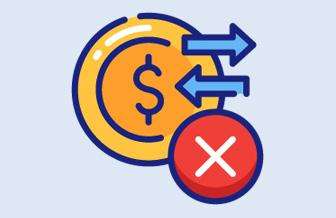Developing new ways to do business online
Posted on Feb 27, 2025

Most of your customers will probably use the internet in some form to either research buying decisions or make a purchase. It’s also likely there is at least one competitor who is offering a new way of buying or transacting, which customers prefer.
As a new business, if you’re considering shifting more of your business online to diversify revenue or to adjust to the way customers want to buy, we have a number of trends for you to consider.
The growth of online marketplaces
An online marketplace is where a third party sets up the trading platform, so a business no longer needs its own exclusive channel to market or find customers. Good examples are Amazon and or specialist sites like Artfinder (selling art).
These marketplaces usually take a fee on transactions, but the benefits include low set-up costs, easy product listings, access to their customers, and payment procedures set up for you. Listing inside these marketplaces can also give you access to a whole new range of customers, while assessing demand and feedback for your new business.
Investigate any relevant marketplaces to decide if it’s worth trying this as another channel to complement your existing selling tactics.
New ways of selling
It wasn’t very long ago when the only way of buying something involved you meeting or talking to someone. The internet and online banking changed the playing field with online buying and selling, but there are even newer ways, such as:
This list isn’t exhaustive and new ideas will come along all the time. Is there a new way of selling or distributing that you could adopt?
The use of subscription models
Paying a monthly fee in exchange for continually updated products or services is relatively new, but has spread to include a huge range of services. Netflix, Neon, Disney, and Apple are good media examples. Almost every mobile app you can imagine uses the same model of accepting recurring monthly revenue in exchange for the full use of the product from day one.
You don’t, however, need to be a tech company to have customers pay a monthly fee. Some businesses have customers paying a monthly retainer (accounting businesses are starting to do this), while others provide monthly delivery for a regular payment.
What can you sell or provide where customers pay you monthly or on a regular basis? If this model works for your business, it’s a great way to generate recurring revenue.
The power of freemium
Platform models like social media (Facebook, Instagram, YouTube, LinkedIn, SnapChat) and search engines (Google, Bing, Duck Duck Go) offer their services to users at no cost, who then post, blog, discuss, and participate. The traffic generated is monetized, usually from online advertising.
Online media and gaming sites use this same model to provide a certain amount of services or information for free, with upgrade options to purchase inside the product.
Assess whether you may be able to deliver parts of your business for free while creating alternate revenue streams. Your ‘giveaway’ doesn’t need to be product; it could be valuable content, information or services as a lead generating opportunity.
How do you choose?
One of the issues of competing online is keeping on top of all the technological changes and consumer trends. Even well-known tech entrepreneurs get surprised by new developments. To help find out what’s happening:
- Stay informed on new business apps relevant to your industry
- Adopt new software and channels as early as you can
- Use social media to uncover trends
- Look at competitors or similar businesses internationally to spot new ideas
- Network with your peers across different sectors
- Keep close to your customers and how they buy or transact
As you start your business journey, continually review how your customers seek information, buy, transact, or engage with the industry. It’s possible that how you deliver online will become as important a competitive advantage as what you actually do.
Was this helpful?
Thank you for the feedback








